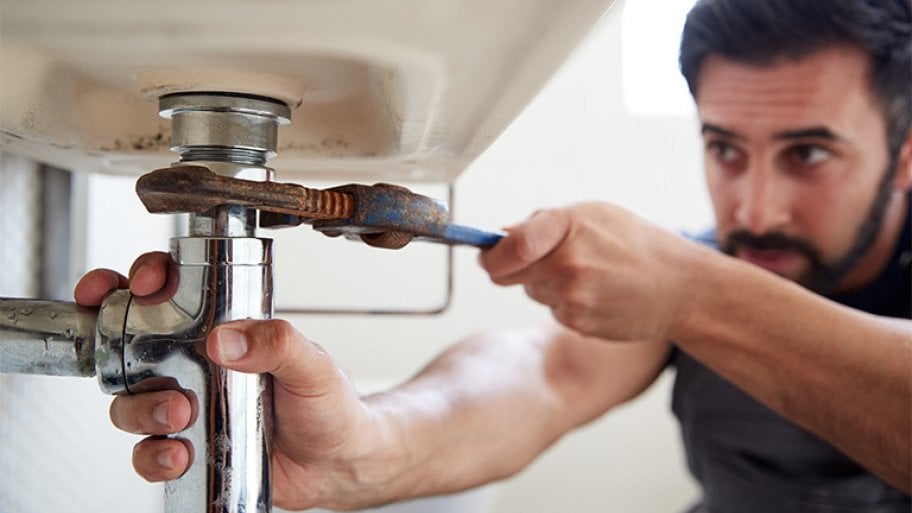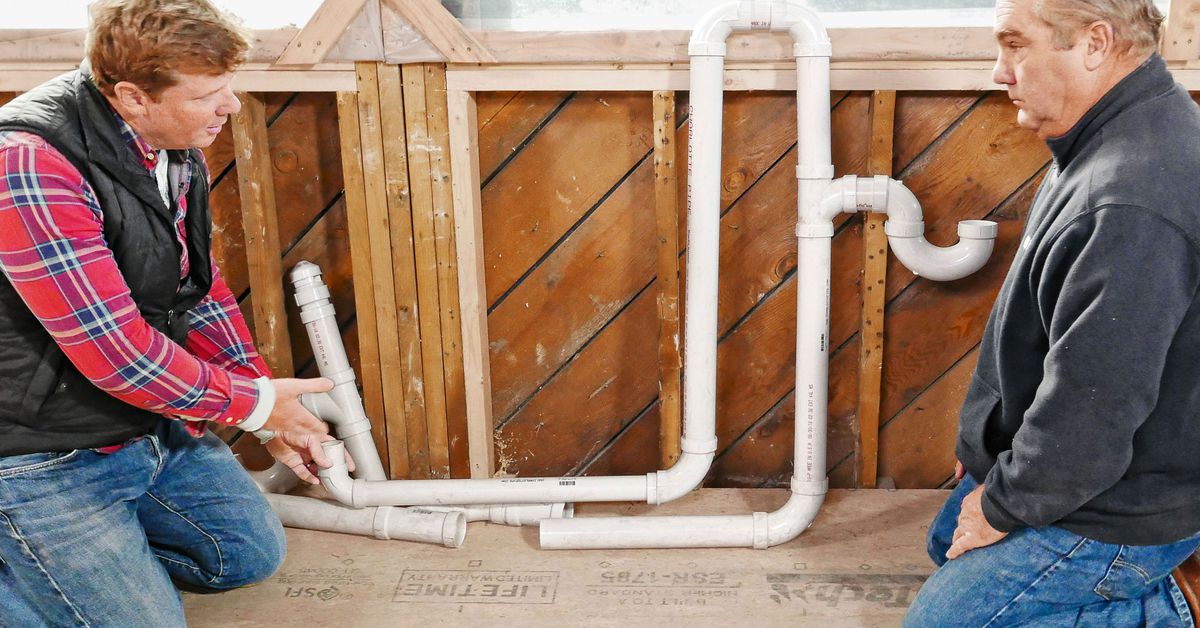On this page in the next paragraph you can locate lots of exceptional advice about Diagnose Unwanted Plumbing Noises.

To diagnose noisy plumbing, it is necessary to figure out very first whether the unwanted noises take place on the system's inlet side-in other words, when water is turned on-or on the drainpipe side. Sounds on the inlet side have varied reasons: excessive water pressure, used shutoff and also tap parts, improperly connected pumps or other appliances, inaccurately positioned pipeline fasteners, and also plumbing runs containing too many limited bends or various other limitations. Sounds on the drain side typically stem from inadequate place or, similar to some inlet side sound, a design having tight bends.
Hissing
Hissing sound that occurs when a tap is opened a little typically signals too much water pressure. Consult your neighborhood water company if you suspect this issue; it will certainly have the ability to tell you the water stress in your location as well as can set up a pressurereducing valve on the incoming water pipe if needed.
Thudding
Thudding sound, typically accompanied by shivering pipelines, when a tap or home appliance shutoff is switched off is a problem called water hammer. The sound and also resonance are brought on by the resounding wave of pressure in the water, which all of a sudden has no place to go. In some cases opening a valve that discharges water swiftly into a section of piping containing a limitation, elbow, or tee fitting can produce the same problem.
Water hammer can usually be healed by mounting fittings called air chambers or shock absorbers in the plumbing to which the problem shutoffs or faucets are attached. These gadgets permit the shock wave produced by the halted flow of water to dissipate in the air they contain, which (unlike water) is compressible.
Older plumbing systems might have brief vertical areas of capped pipeline behind wall surfaces on faucet competes the same function; these can eventually loaded with water, reducing or damaging their performance. The cure is to drain pipes the water supply completely by turning off the major supply of water shutoff and also opening all faucets. Then open the primary supply valve as well as shut the taps individually, starting with the faucet nearest the valve as well as ending with the one farthest away.
Chattering or Screeching
Extreme chattering or shrilling that takes place when a shutoff or tap is activated, which typically goes away when the installation is opened totally, signals loosened or faulty inner parts. The remedy is to change the shutoff or tap with a brand-new one.
Pumps and also appliances such as cleaning makers and also dishwashing machines can move electric motor noise to pipelines if they are poorly linked. Link such products to plumbing with plastic or rubber hoses-never rigid pipe-to isolate them.
Other Inlet Side Noises
Creaking, squeaking, scraping, snapping, and also tapping generally are brought on by the expansion or tightening of pipes, generally copper ones providing warm water. The audios take place as the pipes slide against loose bolts or strike close-by residence framing. You can often identify the place of the trouble if the pipelines are exposed; just follow the noise when the pipelines are making noise. Most likely you will discover a loose pipeline wall mount or a location where pipes exist so near flooring joists or various other framing pieces that they clatter against them. Affixing foam pipe insulation around the pipelines at the point of contact must correct the issue. Be sure straps as well as wall mounts are secure and also give ample support. Where possible, pipeline fasteners should be affixed to substantial structural elements such as structure walls as opposed to to framing; doing so minimizes the transmission of vibrations from plumbing to surface areas that can amplify and transfer them. If attaching fasteners to framing is unavoidable, cover pipes with insulation or various other durable product where they contact fasteners, and sandwich completions of brand-new fasteners between rubber washing machines when installing them.
Fixing plumbing runs that struggle with flow-restricting limited or numerous bends is a last resource that should be embarked on just after speaking with a knowledgeable plumbing contractor. Unfortunately, this situation is fairly usual in older houses that may not have actually been constructed with interior plumbing or that have seen several remodels, particularly by amateurs.
Drainpipe Sound
On the drain side of plumbing, the chief goals are to eliminate surface areas that can be struck by dropping or rushing water and to shield pipes to include unavoidable audios.
In new building and construction, bathtubs, shower stalls, commodes, as well as wallmounted sinks and also basins need to be set on or against resilient underlayments to minimize the transmission of sound with them. Water-saving commodes and faucets are much less noisy than standard models; install them as opposed to older kinds even if codes in your area still permit utilizing older fixtures.
Drainpipes that do not run up and down to the cellar or that branch right into straight pipeline runs supported at floor joists or other mounting existing particularly problematic noise issues. Such pipes are big sufficient to emit significant resonance; they likewise bring considerable amounts of water, which makes the circumstance even worse. In brand-new building, specify cast-iron soil pipelines (the big pipes that drain bathrooms) if you can manage them. Their massiveness consists of a lot of the sound made by water travelling through them. Likewise, prevent transmitting drains in wall surfaces shown to bedrooms as well as rooms where individuals gather. Wall surfaces including drains ought to be soundproofed as was explained previously, utilizing dual panels of sound-insulating fiber board and wallboard. Pipelines themselves can be covered with special fiberglass insulation produced the purpose; such pipelines have a resistant vinyl skin (occasionally having lead). Results are not constantly satisfactory.
Most Common Causes of Noisy Water Pipes
When you’re at home, you expect the pipes in your plumbing system to bring hot and cold water to all parts of your house at your beck and call. Whether you’re baking in the kitchen, relaxing in a hot bath, doing laundry in the washing machine, or simply need to flush the toilet, water supply and delivery is pivotal to daily life.
Unfortunately, these pipes aren’t perfect, and you may notice that some of them start to make noises over time. These seemingly random plumbing sounds might even scare you a little (you’re not alone!).
To make matters worse, loud noises coming from your piping can actually be an indicator of a bad plumbing problem or series of plumbing problems in your pipes. If left untreated, these clogging and drainage issues can become disastrous over time.
To get to the root of these noisy water pipes, let’s take a look at the common causes. While many causes exist, there are a few that crop up again and again in noisy pipes and plumbing systems that are worth being aware of.
So, without further ado, follow along below to find out once and for all what’s making that awful noise in your water pipes and what you can do right now to fix it.
Why Are My Water Pipes Shaking and Rattling?
While most piping lives behind the walls, floors, or ceilings of your home, some have to be hung with fasteners. If one of these slips, gets loose, or comes off completely, then the pipe can start moving or swaying as water runs through it.
Copper pipes in particular often expand as warm water travels across their metal surface, especially if the temperature on the hot water heater is too high.
Copper pipes carrying hot water can enlarge, but when they ultimately reduce in size again, this makes them scrape against a house’s joists, studs, or support brackets in the walls, resulting in loud noises.
If this happens, you’ll probably hear something that sounds like shaking or rattling going on in your walls. This is just the result of a slightly loose pipe, so it can be fixed rather easily, but it should be attended to quickly so the problem doesn’t get worse.
When you hear shaking and rattling in the ceiling or under the floorboards, don’t hesitate to call a trusted plumbing professional to take care of that noise before it gets unbearable.
Why Does My Plumbing Make a Humming Noise?
If the water pressure in your home gets too high for your house’s plumbing system capacity, your pipes can literally start to vibrate, much like a car traveling very fast down an open highway. If the water is running, you might start to hear a hum coming from your pipes.
While this might happen in a home of any type or size, if your home draws on well water, you’re at a higher risk for vibrating pipes. If this happens, do a quick check on your water tank, as you’ll usually want it set at no more than 55 PSI (pound-force per square inch).
In the event that you don’t have direct access to reading a water pressure meter on your tank, call a professional plumber to come and take a look. They can alter the system appropriately to get rid of that pesky hum.
Where Does That High-Pitched Whining Noise Come From?
Every house has a complete piping system of valves and other elements that depends on lots of tiny pieces and parts to enable the whole thing to work as it’s supposed to. Like any other piece of hardware, washers, nuts, and bolts (and much else) can become loose or wear out over time, resulting in a high-pitched whining noise.
This whistling sort of sound is most typically the simple product of a worn down piece of hardware near a dishwasher, washing machine, or dryer.
These specific areas are more susceptible to loose washers or other hardware because those appliances cause a significant amount of movement and can ultimately wear down nuts and bolts in that particular part of the piping.
If this happens to occur in your home, just have a plumber come in to tighten or replace the necessary hardware, and that should fix it up in no time.
How to Fix Loud Noises in Water Pipes
There are lots of causes for noisy water pipes, but the above list covers most of the common culprits. If you experience any of these sounds in your home, the best way to fix the issue quickly and painlessly is to get in touch with a trusted plumber or plumbing company.
At Kay Plumbing, we have years of experience helping families and homeowners get back to life after a difficult or pesky plumbing problem. If you live in Richland or Lexington County, look no further for a local plumbing team to get your pipes back on track.
If you need your drains cleaned or unclogged, we can have a trained, licensed, and insured plumber at your door, often in just a few hours.
Get in touch with us today so that you can stop living with unnecessary nuisance noises coming at all hours of the day and night. Let the good people at Kay Plumbing get you back to life as usual.
https://kayplumbing.com/plumbing-blog/most-common-causes-of-noisy-water-pipes/

Hopefully you enjoyed reading our article on Why Do My Plumbing Pipes Make A Knocking Noise. Thanks so much for finding the time to browse our short article. Sharing is caring. Who knows, you will be doing someone a favor. We love reading our article about Why Do My Pipes Make Noises.
Browse Website
 Jennifer Grey Then & Now!
Jennifer Grey Then & Now! Daniel Stern Then & Now!
Daniel Stern Then & Now! Jonathan Lipnicki Then & Now!
Jonathan Lipnicki Then & Now! Michael C. Maronna Then & Now!
Michael C. Maronna Then & Now! Justine Bateman Then & Now!
Justine Bateman Then & Now!